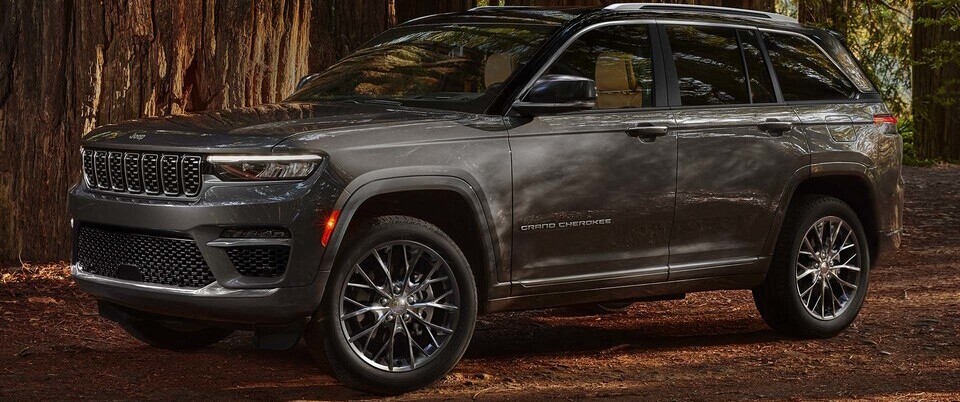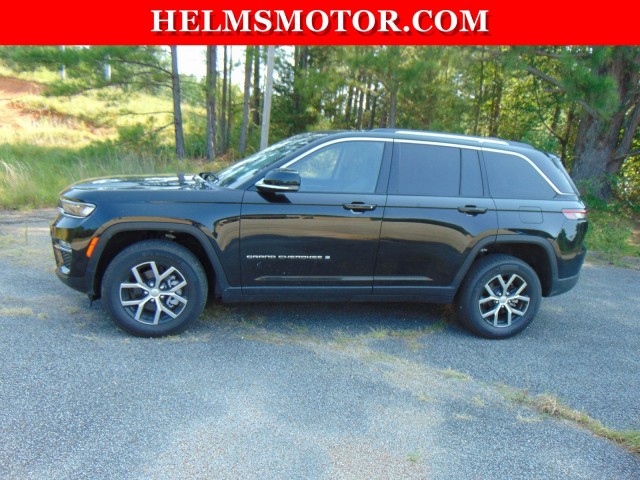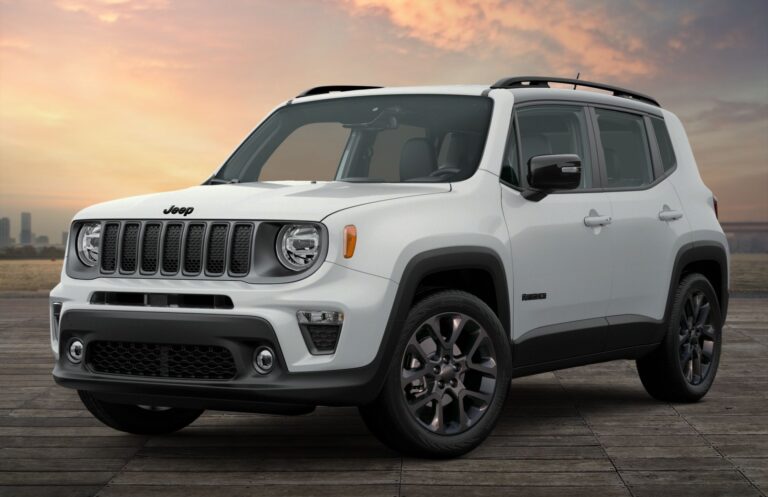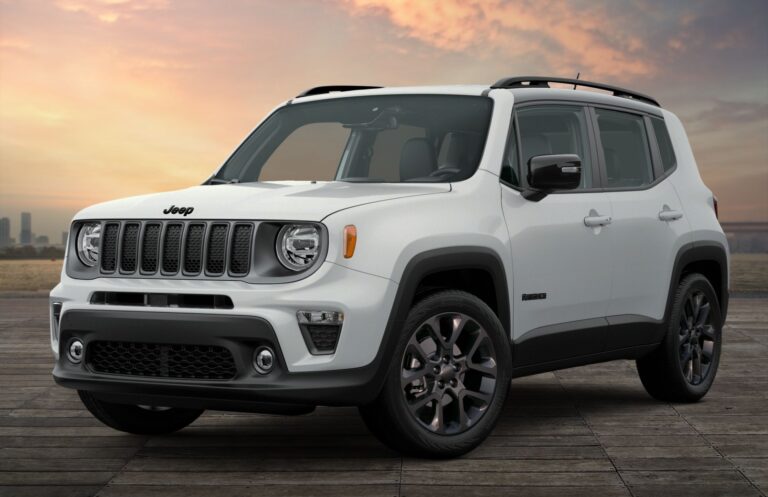Jeep Grand Cherokee Leases: Your Comprehensive Guide to Driving America’s Premier SUV
Jeep Grand Cherokee Leases: Your Comprehensive Guide to Driving America’s Premier SUV jeeps.truckstrend.com
The Jeep Grand Cherokee stands as an icon of American automotive prowess, blending rugged capability with luxurious comfort and cutting-edge technology. For many, the dream of owning this versatile SUV is palpable, but the traditional path of purchasing outright or financing might not always align with financial goals or lifestyle preferences. This is where Jeep Grand Cherokee Leases enter the picture, offering a compelling alternative that allows drivers to experience the pinnacle of Jeep engineering without the long-term commitment of ownership.
A lease, in essence, is a long-term rental agreement. Instead of buying the vehicle, you pay for the depreciation of the vehicle over a set period, typically 24, 36, or 48 months. This arrangement often results in lower monthly payments compared to a traditional car loan, making the Grand Cherokee, with its premium features and higher price point, more accessible to a wider audience. Leasing a Grand Cherokee means you get to enjoy the latest models, often equipped with the newest safety features and infotainment systems, for a manageable monthly fee, before returning it and potentially upgrading to an even newer model. It’s a strategic choice for those who appreciate flexibility, predictable costs, and always driving a vehicle under warranty.
Jeep Grand Cherokee Leases: Your Comprehensive Guide to Driving America’s Premier SUV
Understanding the Basics of a Grand Cherokee Lease
To truly grasp the value proposition of leasing a Jeep Grand Cherokee, it’s crucial to understand the core components that determine your monthly payment and overall lease cost.
- Capitalized Cost (Cap Cost): This is essentially the selling price of the vehicle you are leasing. While it’s a lease, you can still negotiate this price with the dealer, just as you would if you were buying. A lower cap cost directly translates to lower monthly payments.
- Residual Value: This is the estimated value of the Jeep Grand Cherokee at the end of the lease term. It’s expressed as a percentage of the MSRP and is set by the leasing company. A higher residual value means less depreciation over the lease term, which in turn leads to lower monthly payments. The Grand Cherokee generally holds its value well, which can be advantageous for leasing.
- Money Factor: Often referred to as the "lease interest rate," the money factor is a small decimal number that represents the financing charge on your lease. To convert it to an approximate annual percentage rate (APR), multiply it by 2400. A lower money factor is always better. Your credit score significantly influences this factor.
- Lease Term: This is the duration of your lease agreement, commonly 24, 36, or 48 months. Shorter terms often mean higher monthly payments but faster access to newer models.
- Mileage Allowance: This specifies the maximum number of miles you can drive the vehicle during the lease term without incurring extra charges. Common allowances are 10,000, 12,000, or 15,000 miles per year. Exceeding this limit will result in a per-mile penalty, which can range from $0.15 to $0.30 per mile.

Your monthly payment is primarily calculated based on the difference between the capitalized cost and the residual value (the depreciation) plus the money factor and any applicable taxes or fees.
Why Lease a Jeep Grand Cherokee? Key Benefits
Leasing a Jeep Grand Cherokee offers a unique set of advantages that appeal to a specific type of driver.
- Lower Monthly Payments: This is arguably the biggest draw. Because you’re only paying for the depreciation of the vehicle during your lease term, rather than its entire purchase price, your monthly out-of-pocket expenses are typically significantly lower than financing the same vehicle. This allows you to drive a higher trim level or a newer model than you might otherwise afford.
- Access to Newer Models & Technology: Leasing allows you to regularly upgrade to the latest Grand Cherokee models every few years. This means you consistently drive a vehicle with the newest safety features, infotainment systems, engine technologies (like the 4xe plug-in hybrid), and design updates.
- Consistent Warranty Coverage: Your Grand Cherokee will almost always be under the manufacturer’s bumper-to-bumper warranty for the entire lease term. This provides peace of mind, as most unexpected repairs are covered, minimizing out-of-pocket expenses for maintenance beyond routine services.
- Less Maintenance Hassle: While routine maintenance (oil changes, tire rotations) is still your responsibility, major component failures are typically covered by the warranty. Upon lease end, you simply return the vehicle, avoiding the hassle of selling or trading it in.
- Predictable Costs: Beyond your monthly payment, the primary variable costs are fuel and insurance. With warranty coverage, unforeseen repair bills are largely eliminated, making budgeting simpler.
- Avoid Depreciation Worries: While the Grand Cherokee holds its value relatively well, all vehicles depreciate. With a lease, you’re insulated from the actual market depreciation of the vehicle at the end of your term. The residual value is predetermined, so you don’t have to worry about the car being worth less than anticipated.
- Potential Tax Advantages (for Businesses): If the Grand Cherokee is used for business purposes, a portion of lease payments may be tax-deductible, offering financial benefits for entrepreneurs and companies.

Navigating the Grand Cherokee Lease Process: A Step-by-Step Guide
Securing a favorable lease for your Jeep Grand Cherokee involves a structured approach.
- Step 1: Research Models & Trims: The Grand Cherokee comes in various trims (Laredo, Limited, Overland, Summit, Summit Reserve) and powertrains (V6, V8, 4xe PHEV). Understand the features and pricing of each to determine which best fits your needs and budget. The 4xe, for example, might qualify for federal tax credits that can be "passed through" to the lease, effectively lowering the capitalized cost.
- Step 2: Determine Your Budget & Needs: Establish a realistic monthly payment you’re comfortable with. Consider how much you’re willing to put down (initial payment) and your annual mileage requirements. Be honest about your driving habits to avoid mileage penalties.
- Step 3: Understand Lease Terms & Offers: Visit Jeep’s official website and local dealer websites for current lease specials. These often highlight specific trims with attractive monthly payments for a certain term and mileage. Be aware that these advertised specials usually require excellent credit and a significant down payment.
- Step 4: Negotiate Key Lease Components:
- Capitalized Cost: Treat this as if you’re buying the car. Negotiate the selling price of the Grand Cherokee first. A lower "selling price" directly reduces your lease payment.
- Money Factor: Ask the dealer for the money factor. If it seems high, ask if they can lower it. Your credit score is paramount here.
- Residual Value: This is set by the leasing company and is usually non-negotiable. However, understanding it helps you compare deals.
- Fees: Be aware of acquisition fees, disposition fees, and documentation fees. Some can be negotiated or waived.
- Step 5: Review the Lease Agreement Thoroughly: Before signing, read every line. Pay close attention to the lease term, mileage allowance, penalties for excess wear and tear, early termination clauses, and all fees. Don’t be afraid to ask questions.
- Step 6: Insure and Drive Off! Once the paperwork is complete, ensure you have the required insurance coverage (often higher liability limits for leased vehicles) and then enjoy your new Jeep Grand Cherokee!
Important Considerations for Grand Cherokee Lessees
While leasing offers many benefits, it’s not without its specific considerations that future lessees must be aware of.
- Mileage Limits are Critical: For a versatile SUV like the Grand Cherokee, which encourages road trips and adventures, exceeding mileage limits can be costly. If you anticipate driving more than 12,000-15,000 miles per year, consider negotiating a higher mileage allowance upfront (which will increase your monthly payment) or re-evaluate if leasing is the right choice.
- Wear and Tear Guidelines: Leasing companies have specific definitions of "normal" wear and tear. Dings, dents, significant scratches, torn upholstery, or bald tires beyond what’s considered normal can result in charges at lease end. It’s wise to review these guidelines before signing and consider a pre-inspection near the end of your lease.
- Insurance Requirements: Leasing companies often mandate higher liability coverage, comprehensive, and collision insurance than you might otherwise carry. Factor these increased insurance premiums into your monthly budget.
- Early Termination Penalties: Breaking a lease early is almost always very expensive. You typically owe the remaining payments, plus an early termination fee. Avoid this at all costs unless you have a plan like a lease transfer.
- Maintenance Adherence: You are contractually obligated to follow the manufacturer’s recommended maintenance schedule. Failing to do so can lead to charges for excessive wear and tear or invalidate warranty claims.
- End-of-Lease Options: At the end of your Grand Cherokee lease, you generally have three choices:
- Return the Vehicle: Inspect it for excess wear and mileage, pay any outstanding fees, and walk away.
- Buy Out the Vehicle: Purchase the Grand Cherokee for its predetermined residual value, plus any purchase option fees. This is a good option if you love the car and its market value is higher than the residual.
- Lease a New Vehicle: Trade in your current lease for a brand-new Grand Cherokee or another vehicle, potentially rolling over any positive equity (if the car’s market value exceeds its residual).
Tips for Securing the Best Grand Cherokee Lease Deal
- Shop Around: Get quotes from multiple Jeep dealerships. Dealers often have different inventory, incentives, and willingness to negotiate.
- Negotiate the Capitalized Cost: This is the most impactful negotiation point. Treat it like a purchase price.
- Understand the Money Factor: Ask for it directly. A good credit score is essential for the lowest money factor.
- Look for Manufacturer Incentives: Jeep often runs special lease programs with reduced money factors or increased residual values. These are usually the best deals.
- Consider One-Pay Leases: If you have the cash, paying the entire lease upfront can significantly reduce the overall cost by eliminating recurring money factor charges.
- Time Your Lease: End-of-month, end-of-quarter, or end-of-year sales events can be prime times for dealers to meet quotas and offer better deals. New model year introductions can also mean discounts on outgoing models.
- Avoid Excessive Down Payments: While a larger down payment lowers monthly payments, it’s a risk. If the vehicle is totaled early in the lease, your down payment is typically lost, as gap insurance only covers the difference between what you owe and the insurance payout.
Potential Challenges and Solutions
- Challenge: High Mileage Needs.
- Solution: Purchase a higher mileage allowance upfront, which will slightly increase your monthly payment but is usually cheaper than paying per-mile overage fees at the end. Alternatively, if your driving habits change significantly, consider buying out the lease early or attempting a lease transfer.
- Challenge: Unexpected Damage or Excessive Wear.
- Solution: Get damage repaired before returning the vehicle, ideally by a reputable body shop, to avoid potentially higher charges from the leasing company. Some dealerships offer "wear and tear protection" packages, but evaluate if the cost outweighs the potential benefit.
- Challenge: Wanting to Get Out of the Lease Early.
- Solution: Explore lease transfer services like Swapalease or LeaseTrader, where someone takes over your remaining payments. This is often the most cost-effective way to exit a lease early. Alternatively, you could buy out the lease and then sell the vehicle yourself, or trade it in to a dealer (though they might offer less than market value).
Jeep Grand Cherokee Leases: Example Price Table
Disclaimer: The following table provides illustrative examples. Actual lease prices vary significantly based on location, current incentives, your credit score, negotiation, and specific vehicle options. Always obtain personalized quotes from multiple dealerships.
| Model/Trim | MSRP (Illustrative) | Capitalized Cost (Illustrative) | Residual Value (%) | Residual Amount (Illustrative) | Money Factor (Illustrative) | Lease Term | Mileage Allowance | Estimated Monthly Payment (Illustrative) | Due at Signing (Illustrative) |
|---|---|---|---|---|---|---|---|---|---|
| Grand Cherokee Laredo (2WD) | $40,000 | $38,000 | 60% | $24,000 | 0.00180 | 36 Months | 10,000 miles/yr | $420 | $3,500 (1st month, fees, cap cost red.) |
| Grand Cherokee Limited (4×4) | $48,000 | $45,500 | 58% | $27,840 | 0.00165 | 36 Months | 12,000 miles/yr | $525 | $4,000 (1st month, fees, cap cost red.) |
| Grand Cherokee Overland (4×4) | $60,000 | $57,000 | 57% | $34,200 | 0.00150 | 36 Months | 12,000 miles/yr | $650 | $4,500 (1st month, fees, cap cost red.) |
| Grand Cherokee 4xe Summit | $72,000 | $68,000 (after potential credit) | 55% | $39,600 | 0.00140 | 36 Months | 10,000 miles/yr | $780 | $5,000 (1st month, fees, cap cost red.) |
Note on "Due at Signing": This typically includes the first month’s payment, acquisition fee, dealer documentation fees, and potentially a small capitalized cost reduction (down payment). Less due at signing means higher monthly payments.
Frequently Asked Questions (FAQ) about Jeep Grand Cherokee Leases
Q: Can I negotiate the price of a Grand Cherokee lease?
A: Yes, absolutely! You negotiate the "capitalized cost," which is essentially the selling price of the vehicle. A lower capitalized cost directly translates to lower monthly payments. You can also negotiate the money factor if your credit is excellent.
Q: What credit score do I need to lease a Grand Cherokee?
A: Generally, you’ll need a good to excellent credit score (typically 680 FICO or higher, with 720+ being ideal) to qualify for the best lease rates and lowest money factors. Lower scores may result in higher money factors or require a larger down payment.
Q: What happens if I go over my mileage limit?
A: You will incur a per-mile penalty, which is specified in your lease agreement (e.g., $0.15-$0.30 per mile). These charges can add up quickly, so accurately estimating your annual mileage is crucial.
Q: Is maintenance included in a Grand Cherokee lease?
A: Routine maintenance (oil changes, tire rotations) is typically your responsibility. However, since the vehicle is under warranty for the lease term, major repairs due to defects are usually covered. Some premium trims or special lease offers might include certain scheduled maintenance, so always clarify this in your agreement.
Q: Can I buy my Grand Cherokee at the end of the lease?
A: Yes. Your lease agreement will specify a "purchase option price" or "residual value" at the end of the term. You can buy the vehicle for this amount, plus any purchase option fees. This is a good option if you love the car and its market value is higher than the predetermined residual.
Q: Is leasing better than buying for a Grand Cherokee?
A: It depends on your individual circumstances.
- Leasing is often better if: You want lower monthly payments, enjoy driving a new car every few years, prefer consistent warranty coverage, drive predictable mileage, and don’t want the hassle of selling a car.
- Buying is often better if: You plan to keep the vehicle for a long time (beyond 3-5 years), drive high mileage, want to customize the vehicle, or prefer to build equity.
Q: What is "excess wear and tear" for a Grand Cherokee lease?
A: This refers to damage beyond normal use. Examples include large dents, deep scratches, cracked windshields, torn upholstery, excessive tire wear, or warning lights on the dashboard. Minor dings and scuffs are usually acceptable. Review your lease agreement’s specific guidelines.
Conclusion
Leasing a Jeep Grand Cherokee presents a compelling and flexible pathway to experiencing one of America’s most beloved and capable SUVs. It offers the allure of lower monthly payments, access to the latest models, and the peace of mind that comes with consistent warranty coverage. By understanding the core components of a lease, diligently navigating the process, and being mindful of key considerations like mileage limits and wear and tear, prospective lessees can make informed decisions that align with their financial goals and lifestyle.
Ultimately, whether you’re drawn to the Grand Cherokee’s legendary off-road prowess, its refined on-road manners, or its luxurious interior and advanced technology, a lease can make that dream a reality. It’s not just about driving a car; it’s about enjoying a premium experience with predictable costs and the freedom to embrace what’s next. With careful planning and negotiation, your ideal Jeep Grand Cherokee lease awaits.






